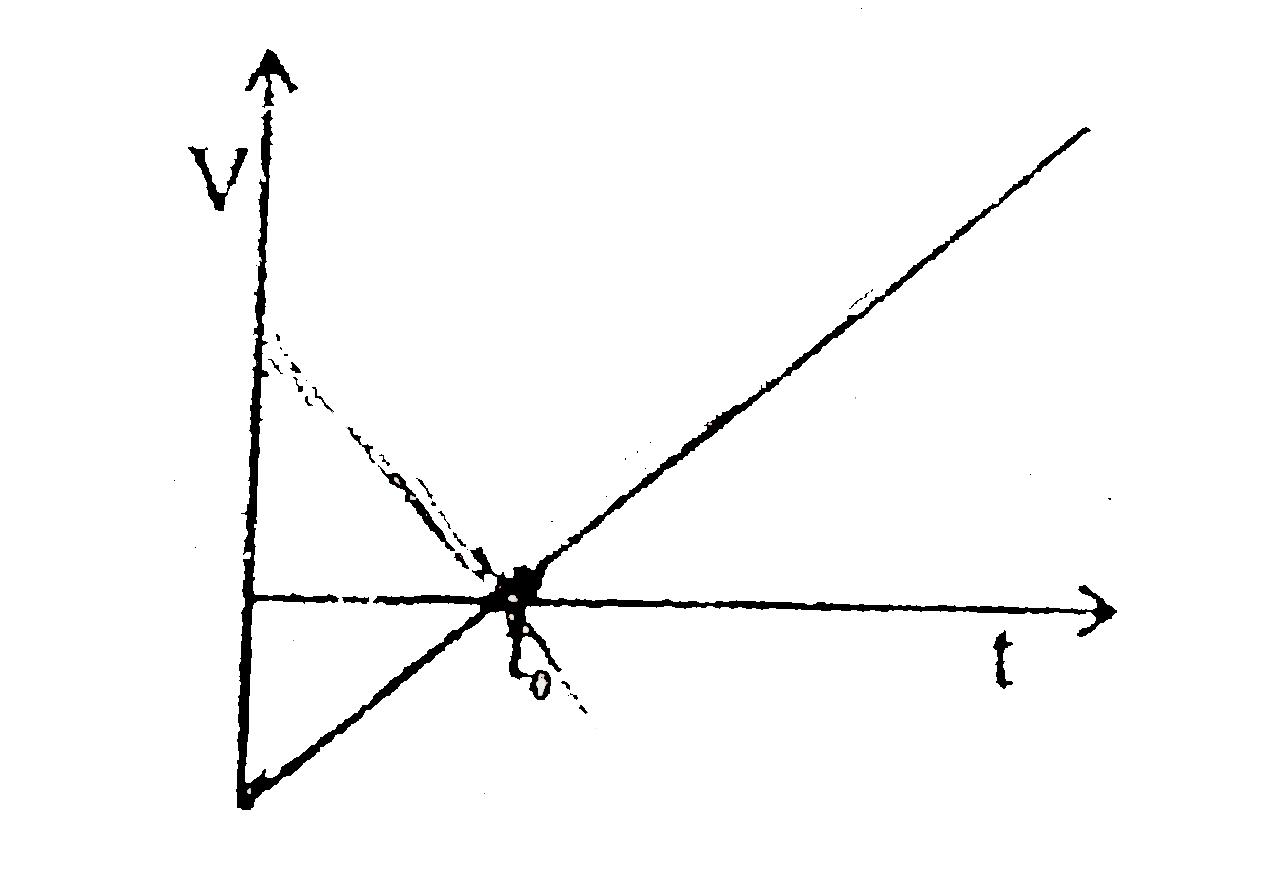Assertion:− If a particle is acted upon by an external force its momentum must change
Reason:−∣∣∣d→vdt∣∣∣ is ALWAYS equal to ddt|→v|
Here →v has its usual meaning. Solution in Gujrati
If both Assertion & Reason are True & the Reason is a correct explanation of the Assertion.
If both Assertion & Reason are True but Reason is not a correct explanation of the Assertiion.
If Assertion is True but the Reason is False.
If both Assertion & Reason are False
The correct Answer is:C
N/A
Topper's Solved these Questions
- TEST PAPERBOOK - ALLEN CHAPTER - TEST PAPEREXERCISE - Exercise (Physics)
330 Videos
- TEST PAPERBOOK - ALLEN CHAPTER - TEST PAPEREXERCISE - PHYSICS
4 Videos
- SIMPLE HARMONIC MOTIONBOOK - ALLEN CHAPTER - SIMPLE HARMONIC MOTIONEXERCISE - Example
1 Videos
- TEST PAPER 1BOOK - ALLEN CHAPTER - TEST PAPER 1EXERCISE - PHYSICS
11 Videos
Similar Questions
Figure shows velocity time graph of a particle moving in straight line. Which of the following statement(s) is / are CORRECT:−

View SolutionChoose the correct statement:
View SolutionA rod with rectangular cross section oscillates about a horizontal axis passing through one of its ends and it behaves like a seconds pendulum, its length will be
View SolutionWhy are electric field lines perpendicular at a point on an equipotential surface of a conductor ?
View SolutionStatement I: The greater the rate of the change in the momentum vector, the greater the force applied. Statement II: Newton's second law is vec(F)=(dvec(p))/(dt) .
View SolutionSTATEMENT-1: ∣∣∣d→vdt∣∣∣ is equal to ddT|→v|. Here →v has its usual meaning.
STATEMENT-2: If a particle si acted upon by a external force its momentum must change.
View SolutionIf a charged particle goes unaccelerated in a region containing electric and magnetic fields,
(i) →E must be perpendicular to →B
(ii) →v must be perpendicular to →E
(iii) →v must be perpendicular to →B
(iv)E must be equal to vB
View SolutionThe position vector of an object moving in X-Z plane is vec(r)=v_(0)that(i)+a_(0)e^(b_(0)t)hat(k) . Find its (i) velocity (vec(v)=(dvec(r))/(dt)) (ii) speed (|vec(v)|) (iii) Acceleration ((dvec(v))/(dt)) as a function of time.
View SolutionA particle moves in such a way that its position vector at any time t is →r=tˆi+12t2ˆj+tˆk.
Find as a function of time:
(i) The velocity (d→rdt) (ii) The speed (∣∣∣d→rdt∣∣∣) (iii) The acceleration (d→vdt)
(iv) The magnitude of the acceleration
(v) The magnitude of the component of acceleration along velocity (called tangential acceleration)
(v) The magnitude of the component of acceleration perpendicular to velocity (called normal acceleration).
View Solutionvec(r)=2that(i)+3tvec(2)hat(j) . Find vec(v) and vec(a) where vec(v)=(dvec(r))/(dr) , vec(a)=(dvec(v))/(dt)
View SolutionWhat does d|→v|/dt and |d→v/dt| represent ? Can these be equal ? Can. (a) d|→v|/dt=0 while |d→v/dt|≠0 (b) d|→v|/dt≠0 while |d→v/dt|=0?
View SolutionFor a particle executing SHM, if x, v, a and F represent dispacement, velocity, acceleration and restoring force, then
(A) →F.→x is always negative
(B) →v.→x is always negative
(C) →v×→a is always zero
(D) →a×→v is always positive
View SolutionAssertion: Always ∣∣∣d→vdt∣∣∣=ddt|→v| , where →v has its usual meaning.
(Reason): Acceleration is rate of change of velocity.
View Solution(A) Always ∣∣∣d→vdt∣∣∣=ddt∣∣→V∣∣,where →v has its usual meaning
(R ):Acceleration is rate of change of speed.
View Solution(A): Always |(d vecv)/(dt)|=(d)/(dt) |vecv| , where vecv has its usual meaning. (R) : Acceleration is rate of change of speed.
View SolutionA particle performs SHM along a straight line and its position is vec(R ) , acceleration is vec(a) , velocity is vec(v) is and force on particle is vec(f) . Then which of the following statement are true? (i) vec(v). vec(a) is always + ve (ii) vec(v).vec(R ) may be -ve (iii) vec(f).vec(R ) is always -ve (iv) vec(v) is parallel to vec(f) sometimes
View Solution
